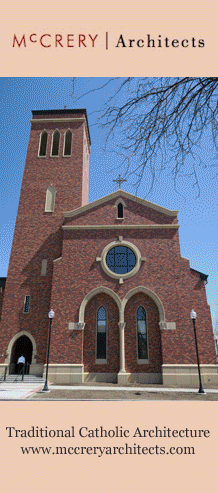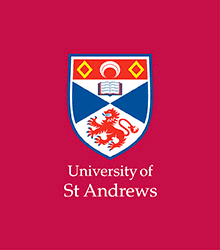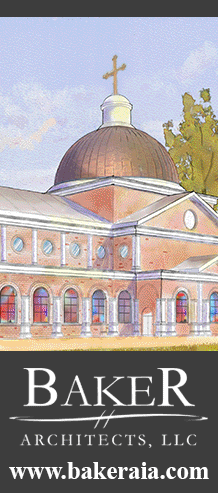 At the request of "Pes" a regular commentator here at the New Liturgical Movement, I have prepared a three-part series on how to read Dominican chant notation. This is the first installment.
At the request of "Pes" a regular commentator here at the New Liturgical Movement, I have prepared a three-part series on how to read Dominican chant notation. This is the first installment.
Those who know Gregorian music, especially with the so-called Solesmes marks, are often surprised when they first encounter printed versions (or on-line manuscript) versions of Dominican chant. The first thing they notice is the complete absence of the Solesmes marks: epistema, dot, ictus, etc. The next thing they notice is that there is no quilisma. The so-called "expressive neumes" are totally absent. Then there is that funny Dominican quarter bar: it is not on the top line of the staff, but moves up and down to the height of the note it follows. And the double bar appears where in the Roman books one expects an asterisk. Finally they notice that the liquescents often appear on diphthongs and liquid consonants where they are lacking in Roman music.
Modern Dominican books reproduce the shape of the neumes in the medieval manuscripts of our music, which were based on the Humbert of Roman Codex exemplar of 1254, which still exists as MS 1 in the Domincan Archives in Rome. In order to sing our music properly, cantors need to know the system of interpretation explained in the treatises of Jerome of Moravia (d. after 1271. probably Scottish), a Dominican musicologist, who codified traditional practice. An image of his treatise De Musica, copied at the beginning of every medieval Dominican Antiphonal, is at the top of this post. It is from the fourteenth-century Poissy Antiphonal.
His system for rhythm is presented in an accessible, albeit Latin, form in the Dominican Processionarium of 1949. The Dominican system of adapting psalm tones to the psalms found in that book was suppressed in 1965 with the publication of the post-Vatican II Regulae Cantus in favor of the Benedictine method, although the Dominican melodies of the tones were left unchanged. But for all other chants, the thirteenth-century system continues in use today, in continuity with the living tradition of chant extending in an unbroken line back to the earliest days of the Order. The most important section of the Regulae Cantus for interpreting the chant is Section III, "De pausis et earum signis et proportione." I have adapted that section for use by choirs, and will present it in another post, but first singers need to know certain things.
1. Dominican and Gregorian neumes mean the same thing as to relative pitch on the staff as indicated by the clef. Those who do not know how to read neumes and what their names are, should consult the many books and on-line aids that explain this before reading any further.
2. In our chant, the two liquescents (the Ephiphonus and the Cephalicus) normally indicate a diphthong or liquid consonant. Since, in normal speech, the two sounds of the diphthong slur into a single vowel and the liquid is a semi-vowel merging into the following or preceding vowel, the two notes in these neumes do not get equal length. In these neumes the small note in each is given about half the length of the larger. The same is done for liquescents even when they do not indicate a diphthong or liquid. A careful student will notice that we regularly use liquescents where Benedictine and Roman music has the two sounds of a diphthong sung on two distinct puncta, e.g., the separation of the "e" and "i" of the "ei" in Eleison.
3. The double bar in our system has two uses. They are very different and have some variations. Here they are:
3A. Most commonly, the double bar indicates the end of a major phrase, at which one side of the choir stops singing, and the other side takes over, following the traditional system (not only Dominican) of "antiphonal singing." This meaning is especially common in Kyries where the last Kyrie is sung by one choir, then the other, then both together. This shift is indicated in Roman books by asterisk and double asterisk. We use double bars. This use of the double bar also indicates a lengthening of the last syllable(s) of the phrase according to a system I will explain later.
3B. The double bar also appears at the beginning of a chant, after the first word or couple of words: there it indicates where the choir comes in to join the cantor who has intoned the piece. It functions like the asterisk in Roman chant. In this case, it does NOT indicate any lengthening of the previous notes.
3C. An interesting variant of this is found in Dominican books for the Gloria. There is one double bar to indicate the end of the priest's intonation phrase: "Gloria in excelsis Deo." But then there is another double bar at the end of "et in terra pax," an odd place to put it. This phrase belongs to the cantor. The choir comes in after that second double bar on the word "hominibus." Why? Many priests cannot sing for beans. They will foul up the intonation, but in the old rite they had to do it. So, the choir ignored what the priest sang and waited to hear the correct pitch and melody from the first cantor. Many priests simply recto-toned their intonation. The Gloria is the only place where this system is used.
4. Expressive neumes and quilisma do not exist in Dominican music. They did not exist as far as I know in any thirteenth-century chant manuscript. The expressive neumes are the product of Solesmes theorists. The quilisma is founded on the appearance, at certain places in the pre-staff notation, of a kind of fuzzy squiggle. There have been long debates over what it meant. My personal opinion is that it originally indicated the half-step and had no phrasing significance. Prof. William Mahrt of the CMAA, with whom I have discussed this, says that is very possible I am right, although he thinks it indicated a light vibrato. Good news! None of this matters for those singing Dominican chant because we don't have any of these flourishes.
That pretty much covers the oddities of notation that one needs to know to sing Dominican music. I will treat its phrasing and rhythm itself in the next post.
Friday, February 08, 2008
How to Sing Dominican Chant I: Notation
Fr. Augustine Thompson, O.P.More recent articles:
“Now About the Midst of the Feast” - Christ the Teacher in the Liturgy of LentGregory DiPippo
Today’s Gospel in the Roman Rite, John 7, 14-31, begins with the words “Now about the midst of the feast”, referring to the feast of Tabernacles, which St John had previously mentioned in verse 2 of the same chapter. And indeed, the whole of this chapter is set within the context of this feast.The Expulsion of the Money-Changers from the Temple, th...
The Apple of Her EyeDavid Clayton
“The Lord God planted a garden in Eden, which is in the east, and there he put the man he had fashioned. From the soil, the Lord God caused to grow every kind of tree, enticing to look at and good to eat, with the tree of life in the middle of the garden, and the tree of the knowledge of good and evil.” (Gen. 2, 8-9) This 17th century painting...
The Exposition of the Holy Lance at St Peter’s BasilicaGregory DiPippo
The YouTube channel of EWTN recently published a video about the exposition of the Holy Lance at St Peter’s basilica on the first Saturday of Lent. This was formerly done on the Ember Friday, which was long kept as the feast of the Holy Lance and Nails, but since this feast is no longer observed, the exposition of the relic has been transferred to ...
The Feast and Sunday of St John ClimacusGregory DiPippo
In the Byzantine liturgy, each of the Sundays of Lent has a special commemoration attached to it. The first Sunday is known as the Sunday of Orthodoxy, because it commemorates the defeat of iconoclasm and the restoration of the orthodox belief in the use of icons; many churches have a procession in which the clergy and faithful carry the icons, as...
The Story of Susanna in the Liturgy of LentGregory DiPippo
In the Roman Rite, the story of Susanna is read as the epistle of Saturday of the third week of Lent, the longest epistle of the entire year. This episode is not in the Hebrew text of Daniel, but in the manuscripts of the Septuagint, it appears as the beginning of the book, probably because in verse 45 Daniel is called a “younger man”, whic...
A New Edition of the Monastic Breviary Available SoonGregory DiPippo
The printing house of the Monastère Saint-Benoît in Brignole, France, Éditions Pax inter Spinas, is pleased to announce the re-publication of the two volumes of the last edition (1963) of the traditional Latin Monastic Breviary.The Breviary contains all that is necessary to pray the complete Monastic Divine Office of Matins, Lauds, Prime, Terce, S...
A Mid-Western Saint from Rome: Guest Article by Mr Sean PilcherGregory DiPippo
Thanks once again to our friend Mr Sean Pilcher, this time for sharing with us this account of the relics of a Saint from the Roman catacombs, which were brought to the cathedral of Dubuque, Iowa, in the 19th century. Mr Pilcher is the director of Sacra: Relics of the Saints (sacrarelics.org), an apostolate that promotes education about relics, and...
Fons et Culmen Sacred Liturgy Summit - July 1–4, Menlo Park, CaliforniaJennifer Donelson-Nowicka
You are cordially invited to the Fons et Culmen Sacred Liturgy Summit, which will be held from July 1-4, in Menlo Park, California!Fons et Culmen Sacred Liturgy Summit gathers together Catholics who love Christ, the Church, and the Church’s sacred liturgical tradition for: - the solemn celebration of the Mass and Vespers; - insightful talks on...
A Lenten Station Mass in the Roman ForumGregory DiPippo
Today’s Mass is one of the series instituted by Pope St Gregory II (715-31) when he abolished the older custom of the Roman Rite, by which the Thursdays of Lent were “aliturgical” days on which no Mass was celebrated. The station appointed for the day is at the basilica of Ss Cosmas and Damian, which was constructed by Pope St Felix IV (526-30) in ...
Do Priests or Religious Need Special Permission to Pray a Pre-55 Breviary?Peter Kwasniewski
On occasion, I receive an email like the following (in this case, from a seminarian): “Do you happen to know of any sources/authoritative references which you could point me to that explain why praying the Pre-55 Breviary definitely satisfies the canonical obligation for clerics or religious? As I am strongly desirous of the Pre-55 Liturgy, I ...




















